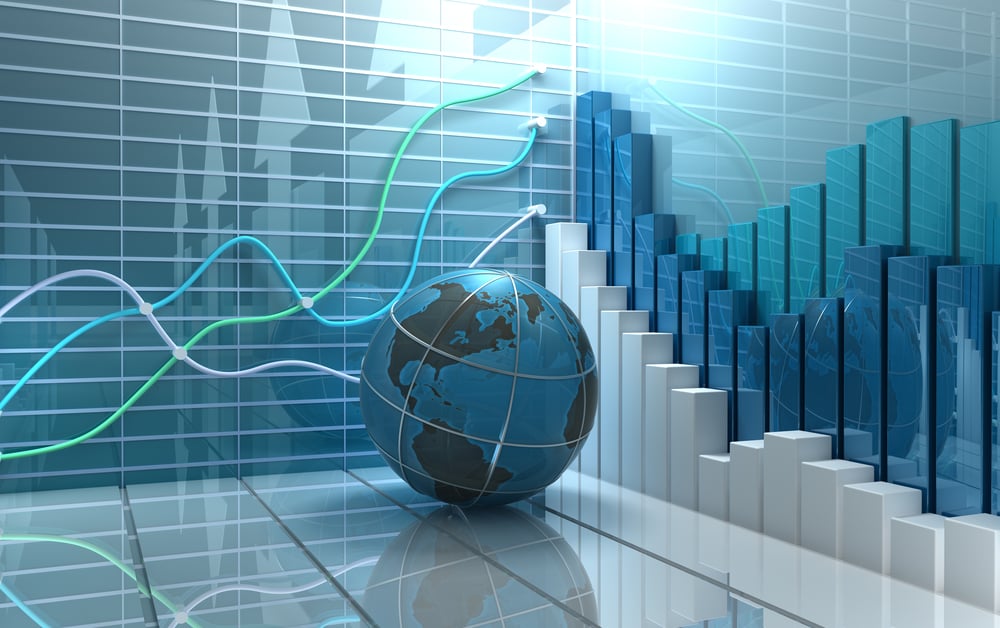
So it's starting to look like we're finally coming out the other side of this coronavirus disaster, doesn't it? The curve has been flattened! Stores are reopening! Yes, yes, the nattering nabobs of negativism—as popularized by Nixon vice-president Spiro Agnew back in the 1960s—are still offering their gore-crow warnings about explosions in coronavirus cases. But as reopening optimism infuses the stock market once more, Goldman Sachs (NYSE: GS) offers a bit of warning about the nature of the market rally in progress.
The Curve is Flattened, Not Gone
The first part of the warning makes a lot of sense, even to the most optimistic out there. We have flattened the curve by most any standard, which is what we set out to do, overreach aside. The initial wave of COVID-19 cases has resulted in a death count that looks in the ballpark of a typical year of the flu. Treatments are increasingly available, from remdesivir to the hydroxychloroquine / azithromicin / zinc cocktail that seems to be doing a lot of good.
But the curve is merely flattened, not gone; a resurgence of cases is all but certain. If such cases explode to new levels, further shutdowns may kick in, and that starts the whole disastrous process all over again.
The market, Goldman Sachs analysts note, has gone from catastrophe to hope, and recovered accordingly; the S&P 500 index, for example, is up 30% from its worst in recent days. However, Goldman Sachs figure that there isn't much room for further upside; the company had a year-end target of 3,000, but Friday's closing figure was 2,929. This assumes Goldman Sachs' year-end target is accurate, of course, but all things considered it's not out of line.
With the market that close to the year-end target, it's easy to see how pullback could step in. It's also entirely possible that the S&P 500 will beat the year-end target for a while, and then pull back to match the target. The S&P 500 might hit 3,200 in September, but then lose 200 points over three months to hit Goldman Sachs' year-end target. The risk, therefore, is fairly substantial.
Plus There's All That Debris. Don't Forget the Debris.
Another major problem going forward is the fractured nature of reopening. States that reopen faster are more likely to see spikes in new coronavirus cases, which may trigger further lockdowns later. Some here will shake their heads and note that that was the point all along, but it might be enough to put a damper on stock growth.
The potential for resurging virus cases aside, there's also the issue of the debris the catastrophe left behind. Start with the $103 billion in bank loan losses expected over the next year. Follow that up with businesses that have been closed so long that they simply cannot reopen, Paycheck Protection Plans and stimulus checks and everything else aside.
The knock-on effects of such economic disasters shake the economy like a California earthquake, branching out from the epicenter to reach areas nowhere near it. Businesses that close don't pay rent; this socks real estate in the snoot. New businesses are hesitant to step into an environment where they could be closed by government order; this means empty real estate won't be selling or leasing any time soon. Meanwhile, no stock buyback programs, dividend cuts, and more hit investors, leaving them without income or the ability to reinvest dividends into stock purchases.
A Slow Recovery, If There Is One
Even optimistic CEOs seem to be dampening their own enthusiasm, with many executives currently suggesting a slow recovery rather than the hoped-for V-shaped recovery. Throw in an incoming election on top of things this November, further destabilizing the market, and things only get worse.
There are even unsettling whispers going around that the Democrats may win back sufficient power in the Senate—and possibly even the White House—to put down the 2017 tax cuts, which will ruin projected earnings-per-share forecasts for the 2021 S&P 500. That doesn't even factor in the larger worldwide picture, including the response from current whipping-boy China.
Uncertainty is ruling the day throughout business, and uncertain businesses don't commonly take a lot of risks. There's too much chance something could go wrong. Yet without some amount of risk, life simply doesn't continue. Social distancing our economy into a shallow grave saves no one. The future going forward will simply have to accept a certain amount of risk in everyday life, if we want to have a life at all.
Before you make your next trade, you'll want to hear this.
MarketBeat keeps track of Wall Street's top-rated and best performing research analysts and the stocks they recommend to their clients on a daily basis.
Our team has identified the five stocks that top analysts are quietly whispering to their clients to buy now before the broader market catches on... and none of the big name stocks were on the list.
They believe these five stocks are the five best companies for investors to buy now...
See The Five Stocks Here
Enter your email address and we'll send you MarketBeat's list of ten stocks that are set to soar in Summer 2025, despite the threat of tariffs and other economic uncertainty. These ten stocks are incredibly resilient and are likely to thrive in any economic environment.
Get This Free Report
Like this article? Share it with a colleague.
Link copied to clipboard.